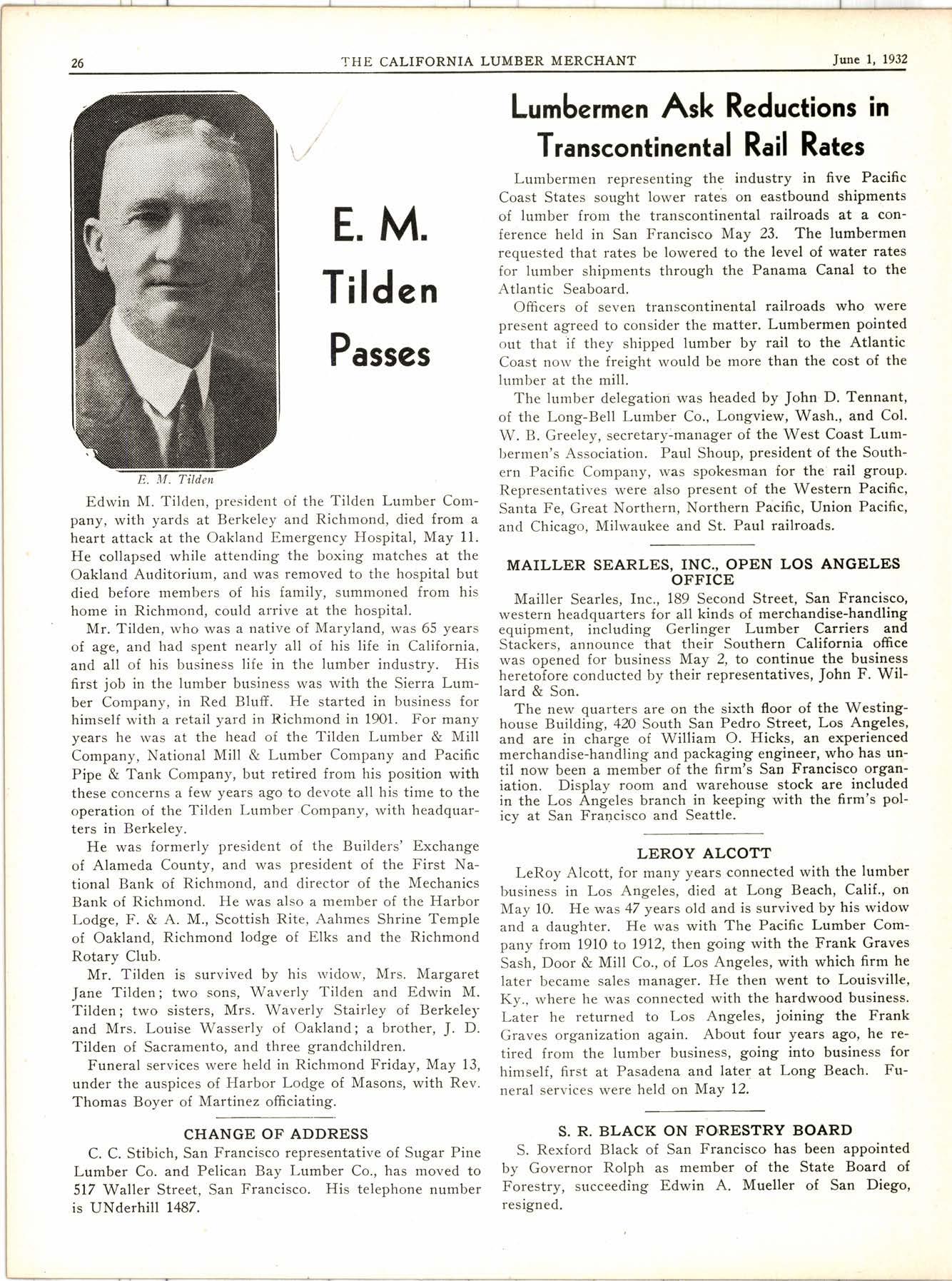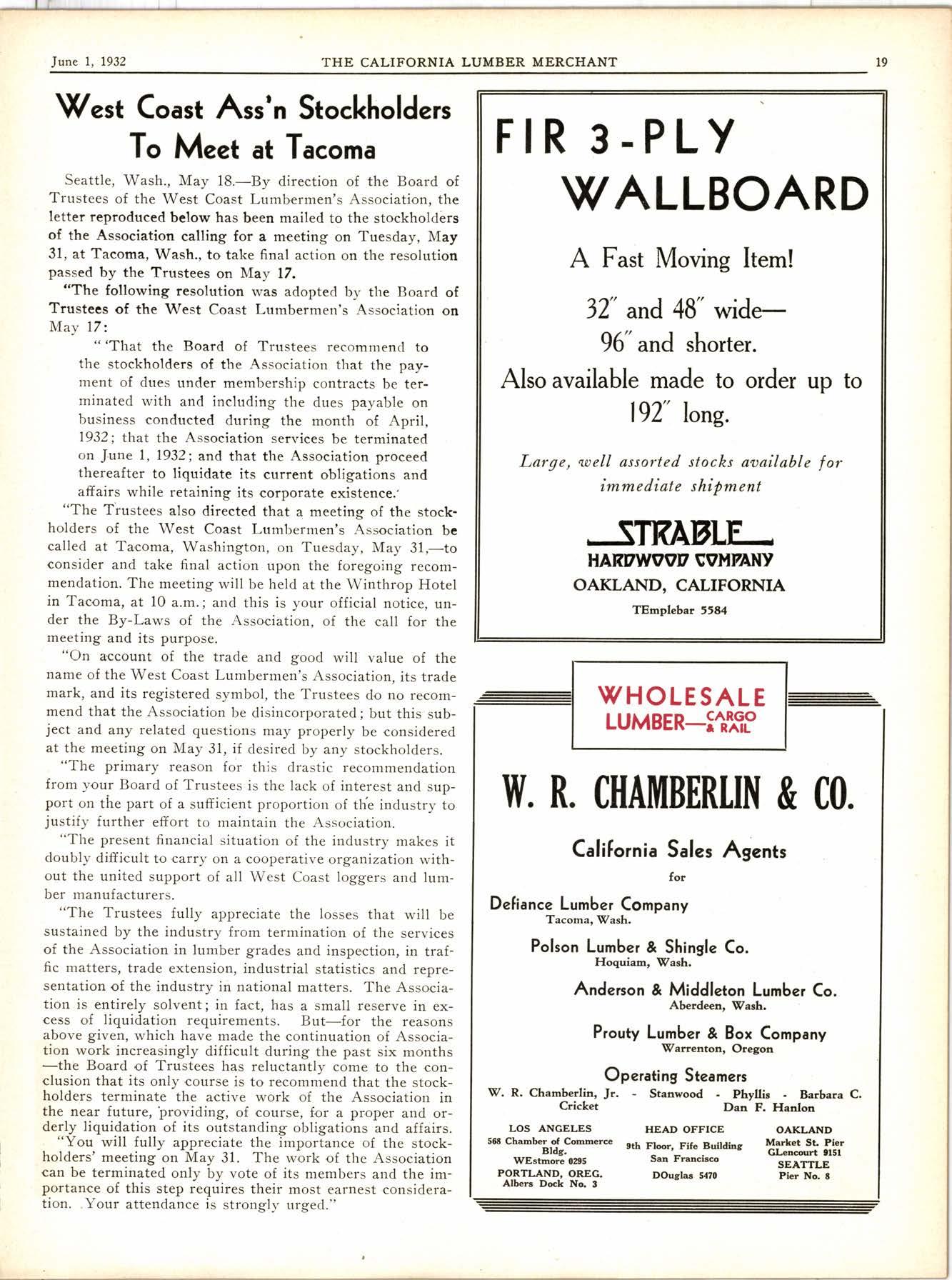
2 minute read
Decreased Lumber Demand Requires Further Production Curtailment
Washington, May 23.-The reduction by three billion feet of surplus lumber stocks which has occurred since January I, L93I, as a result of curtailed production would have been a potent factor in restoring an even balance between supply and demand had it not been for the extraordinary decline in consumption, the Lumber Survey Committee says in its report to the U. S. Timber Conservation Board on lurirber consumption, stocks, and anticipated consumption for the first half of 1932. Facing conditions as they are, however, the Committee finds it necessary to recommend further reductions to offset surplus stocks, which latter are estimated at a.bout 3tl billion feet.
The Lumber Survey Committee r,r'as appointed July 9, 1931, by Secretary of Commerce Robert P. Lamont, Chairman of the Timber Conservation Board. It consists of Thomas S. Holden, economist, F. W. Dodge Company, New York; Dr. Frank M. Surface, Assistant Director, Bureau of Foreign and Domestic Commerce; M. W. Stark, lumber and coal economist, Columbus, Ohio; Calvin Fentress, Chairman, Baker, Fentress & Company, Chicago, and Wilson Compton, Secretary and N{anager, National Lumber Manufacturers Association. The Co.mmittee serves voluntarily in cooperation lvith the rvork of the Timber Conservation Board in its study of the economjc situation in the forest products industries.
Lumber consumption, the Committee finds, has dropped from 37 billion feet in 1928 to an averag'e annual demand of but 20 billion feet during the tr'vo-year period ended March 31, 1932. Its present level is at the rate of only 13 billion feet per year. The Comrnittee finds that there is nothing to indicate a return to 7928 or 1929 consutnptiou levels. Present stoc-ks, representiug an uneconomic sur- plus of three and a half billion feet more than adequate r'eserves, prevent re-establishment of a reasonable balance between stocks and demand.
.pl .waf of relieving the present situation through distribution it recommends that the industry consider pooline of_ stocks, con-qolidation of sales, and deferred financing ti stimulate^building. It urges cooperation of the Depart- ment of Commerce in making a comprehensive markiting and distribution report for the industry and recommendi cooperation of _lumber manufacturers in furnishing information to the Census Bureau of lumber stocks.
The Committee calls particular attention to the adverse influence of increasing taxes on standing timber. It points out the decisive effect high taxation has in stimulating timber cutting in.excess of public requirements for foresl products.
Past recommendations of the Committe urging radical curtailment of production, it notes, are receiving wider attention, and that "the economic burden of reducing excessive stocks is being shared more equitably and more evenly between competitors than at any time in the history of the lumber industry." It is evident, however, that some important factors have not yet participated in the effort to restore balance, although substantial reductions in stocks have been shown in every important producing region during the past guarter. Producers are particularly urged to avoid additions to items that are exceptionally overstocked. and it is recommended that lumber producti,on during the rest of 1932, in so far as community and financial exigencies rvill p,ermit, be adjusted by individual manufactu-rers with view to the accomplishment during the year of recommended regional reductions of stocks in the industry..










